At our pediatric therapy service, our occupational and speech therapists have spent years helping children develop and improve communication in children, a critical skill for their growth. From the first babbles to expressing complex thoughts, every child’s communication style is unique. Some kids are naturally outgoing and eager to share, while others are more reserved and thoughtful. These differences often reflect their personalities and the environments in which they grow, shaping how they connect with others.
Understanding the multifaceted nature of communication in children is essential for supporting their development. Each child’s journey involves not just speaking or listening but also learning to interpret and express emotions effectively. These skills are vital for building strong relationships and navigating social situations. By identifying and nurturing their communication strengths, we can help children grow into confident communicators.
In this blog, we’ll explore how communication styles impact a child’s social and emotional progress. Whether your child is struggling with expressing their thoughts or navigating social cues, our insights aim to empower parents and caregivers to support them effectively. With decades of experience, our goal is to provide actionable strategies to help your child thrive.
Key Takeaways
- Children communicate verbally, expressing thoughts and feelings through spoken language.
- Nonverbal communication in children includes gestures, facial expressions, and body language.
- Children’s communication styles can be categorized as pleasant or reluctant, each with unique characteristics.
- Coding is a modern form of communication for children, enhancing verbal and nonverbal skills.
- Collaborative problem-solving in coding or other group activities is a significant aspect of children’s communication.
Importance of Communication in Childhood
Why is communication so crucial during childhood? Communication, encompassing both verbal and nonverbal elements, serves as the cornerstone of a child’s developmental and relationship-building skills. Essentially, every interaction with a child is an opportunity to nurture their communication skills. This is especially important when addressing children with developmental delays, where enhancing communication can significantly improve their social skills.
The way we speak to children, the tone of voice we use, the eye contact we maintain, and the significance of our physical touch all convey essential messages. These nonverbal cues become the child’s initial language, their primary tool for understanding the world around them.
Effective communication with young children not only teaches them how to express their thoughts and feelings but also establishes the foundation for how they will communicate with others throughout their lives. A child’s early communication experiences directly impact their ability to form relationships as they grow older.
Understanding Verbal and Nonverbal Communication
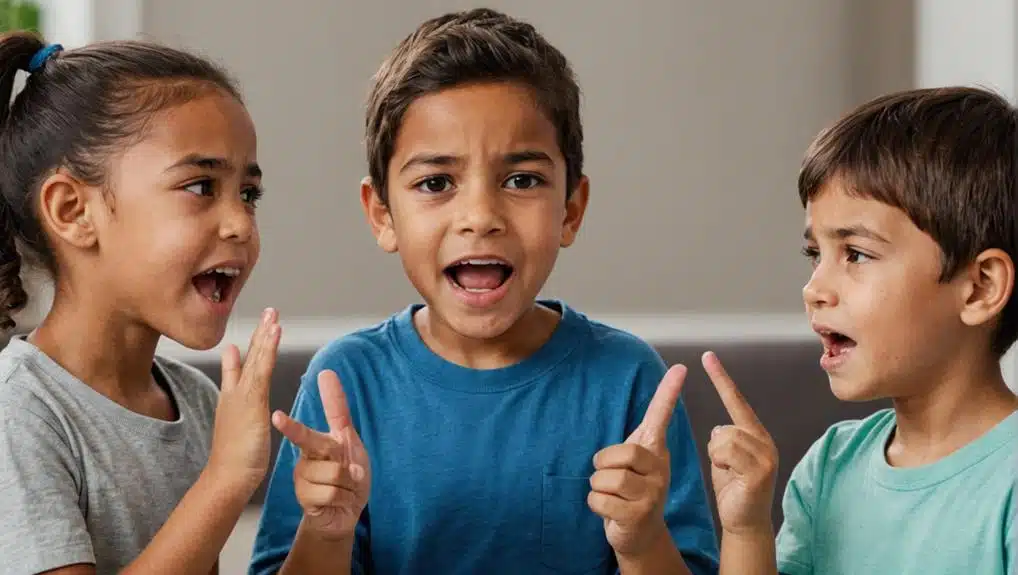
Building upon the significance of communication in childhood, it becomes essential to dissect the two primary forms of communication – verbal and nonverbal. These dual facets of children’s communication play significant roles in their mental development and social interactions.
Verbal communication, as the name suggests, is all about words. It’s how children express their thoughts and feelings, using elements such as pitch, tone, and dialect. Nonverbal communication, on the other hand, is about silent signals, the unspoken language that includes body language, gestures, facial expressions, and eye contact.
Here’s a brief breakdown of the two:
- Verbal communication helps articulate thoughts and provides a medium for children to express their needs, wants, and feelings.
- Nonverbal communication: It offers context, helping others to interpret the feelings that underlie the spoken words.
- Interplay of both: They work hand in hand, enhancing the clarity and completeness of the message conveyed.
- Importance: Understanding both forms is vital for building strong relationships and fostering mental development.
They understand that these forms of communication help nurture a sense of belonging, as children can effectively express themselves and connect with others.
Strategies to Improve Children’s Communication Skills
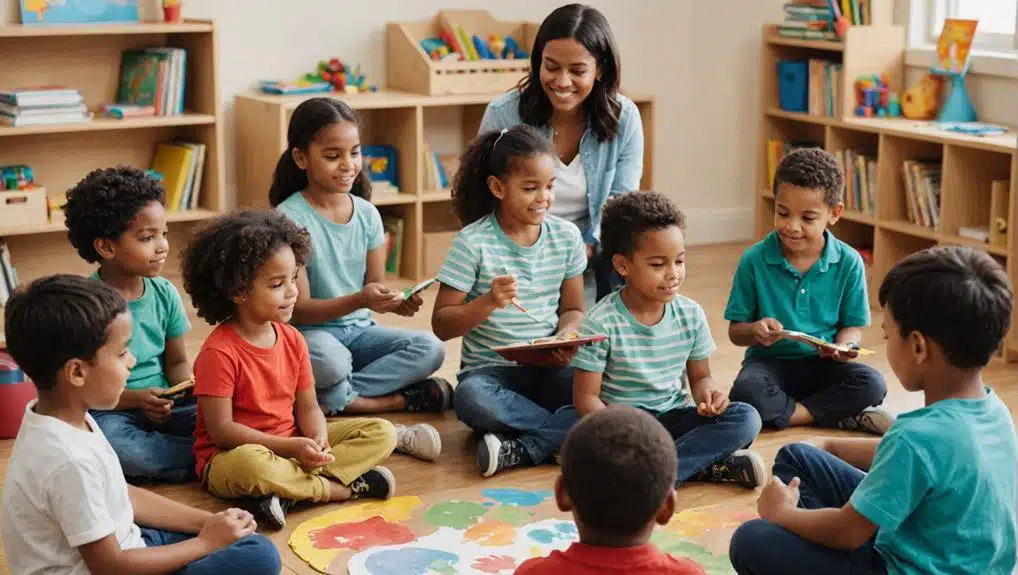
Honing communication abilities is of the utmost importance in child development. Teaching communication skills through problem-solving discussions or debates can significantly enrich a child’s capacity to articulate thoughts and ideas. Moreover, activities such as reading, show-and-tell, or role-playing can nurture a child’s communication proficiency, fostering both verbal and nonverbal signals.
Active listening and body language are other vital components of effective communication. Encouraging children to listen attentively and respond with empathy and understanding can enhance their interaction with others. Likewise, teaching children to use body language appropriately can further enrich their communication skills, enabling a more expressive and thorough dialogue.
Furthermore, promoting respectful and kind communication is crucial in building strong communication skills. By creating an environment where compassionate communication is valued, children learn to communicate effectively while maintaining respect for others.
Engaging children in a collaborative process, such as group projects or learning to code, can also bolster their communication skills. Through collaboration, children learn to express their ideas, listen to others, and work together towards a common goal. These approaches can significantly improve a child’s communication skills, nurturing their interpersonal relationships and overall growth.
Different Child Communication Styles
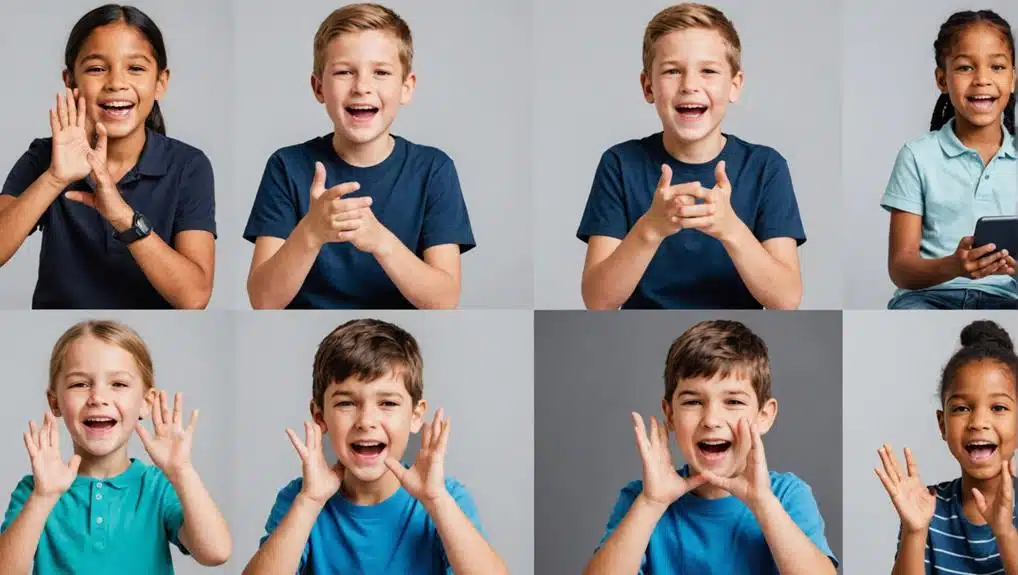
In understanding the complexities of child interaction, it is essential to acknowledge the diverse communication styles exhibited by children, namely, the friendly, hesitant, passive, and personal agenda styles. Each style manifests through different patterns of engagement, response, and needs, thereby creating unique opportunities and challenges for interaction. Understanding these styles not only promotes effective communication but also leads to early identity fiction of support needs and facilitation of better engagement.
Sociable Communication Style
Embodying a drive to connect, children with a friendly communication style frequently initiate interaction, demonstrating their enthusiasm to engage with others. Quick to respond and to maintain communication, even with a limited vocabulary, these children display an innate willingness to interact, contributing significantly to positive social interactions.
This style is characterized by:
- Active engagement: These children are often the initiators of communication, displaying their interest in others.
- Responsiveness: They are quick to respond to others’ attempts to communicate, improving the flow of conversation.
- Desire to connect: They demonstrate a strong desire to establish and maintain social connections.
- Persistence: Even when faced with communication challenges, they persist, showing resilience and adaptability.
Understanding a child’s communicative style is vital for guiding them in communicating effectively. This knowledge not only assists in communicating with your child but also aids in their social skill and communication development. Emphasizing empathy and belonging and supporting children with a friendly communication style can boost their ability to build and maintain positive social relationships.
Reluctant Communication Approach
While a friendly communication style is animated by a desire to connect, another approach, the hesitant communication style, is marked by a slower pace of interaction. Children adhering to this approach may be viewed as shy, needing additional time to feel comfortable with new people. This reluctance in communication may not be indicative of a lack of interest but rather a cautious approach to verbal communication.
In their interactions, these children are often more responsive than initiatory. Their subtle attempts at communication might go unnoticed in environments bustling with more sociable communicators. This can potentially lead to an obstacle in their interaction attempts due to a lack of confidence, making it challenging to form connections.
It is important to note that medications or developmental delays could influence a child’s shift toward this communication style. Therefore, understanding and empathy need to be extended to these children. The hesitant communication style represents a different but equally valid method of communicating. By recognizing and understanding this, we can help foster a sense of belonging for these children, acknowledging their distinct communication styles.
Passive and Own Agenda Styles
Children showing a passive communication style often appear uninterested in initiating or responding to interactions, including those between individuals and playthings. This form of communication, even if it may seem indifferent, is a valid child’s communication approach that requires understanding and patience.
On the other hand, the self-initiated communication style is characterized by a child who prefers to play independently, only initiating interaction when needing something. This child’s way of communicating is not necessarily indicative of selfishness but may indicate a higher level of self-reliance.
It’s essential to recognize these types of communication for different reasons:
- Recognizing a child’s communication style helps determine their preferences, enhancing communication.
- Grasping these styles encourages empathy and patience, nurturing a sense of belonging.
- A child’s passive communication might indicate potential developmental challenges, necessitating professional consultation.
- Acknowledging the self-initiated style can promote independent learning while imparting appropriate social interaction.
Role of Parents, Caregivers, and Guardians in Enhancing Communication
Parents, caregivers, and guardians play a vital role in nurturing communication in children. From the first smile to more complex conversations, they are a child’s primary models for learning how to express thoughts and emotions. Everyday interactions, like talking during meals, reading bedtime stories, or simply asking about their day, help children develop language skills naturally. These moments build a strong foundation for communication, fostering confidence and curiosity.
Caregivers can also enhance communication by actively listening and responding to a child’s attempts to connect. Encouraging questions, validating emotions, and taking time to explain new concepts make children feel heard and valued. These efforts not only build language skills but also deepen bonds and promote emotional security. By incorporating language-rich activities into daily routines, parents can turn everyday experiences into powerful opportunities for growth.
If you’re unsure where to start or notice challenges with your child’s communication, reaching out to a speech therapist can be a significant first step. Speech therapists can provide tailored ideas and strategies for fostering communication at home. With expert guidance, you can learn fun and effective ways to help your child become a confident communicator while strengthening your connection.
Role of Teachers in Enhancing Communication
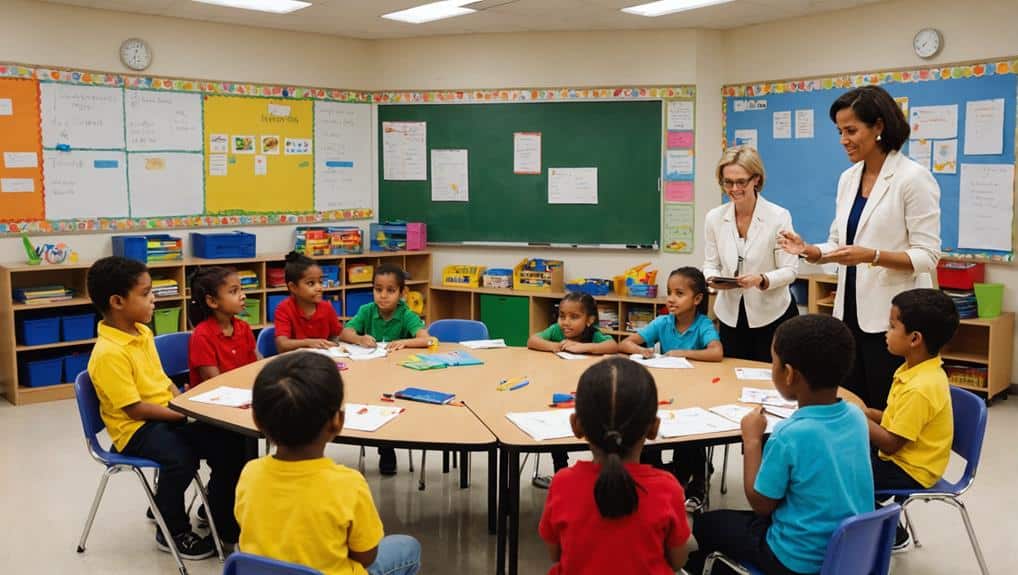
Educators have an enormous responsibility to create communication-rich environments that nurture the growth of language skills in children. They play a crucial role in this process, facilitating development by encouraging children to communicate, express themselves, and use language as a potent tool for connection. They work to cultivate responsive interactions, making children feel heard, understood, and valued.
Educators’ roles extend beyond classroom boundaries. They collaborate with families, recognizing that a child’s initial language patterns are often established at home. By building on these patterns, educators can enrich children’s communication skills, making them confident and proficient communicators.
Educators further support children in developing communicative competence, enabling expression and understanding in diverse contexts. Their role is not limited to developing skills for academic success but also nurturing a love for language. This enthusiasm, when instilled in children, can lead to a lifelong exploration of effective communication and understanding. Hence, the role of educators is essential in shaping children’s communication skills.
Developing Communication Skills Through Coding
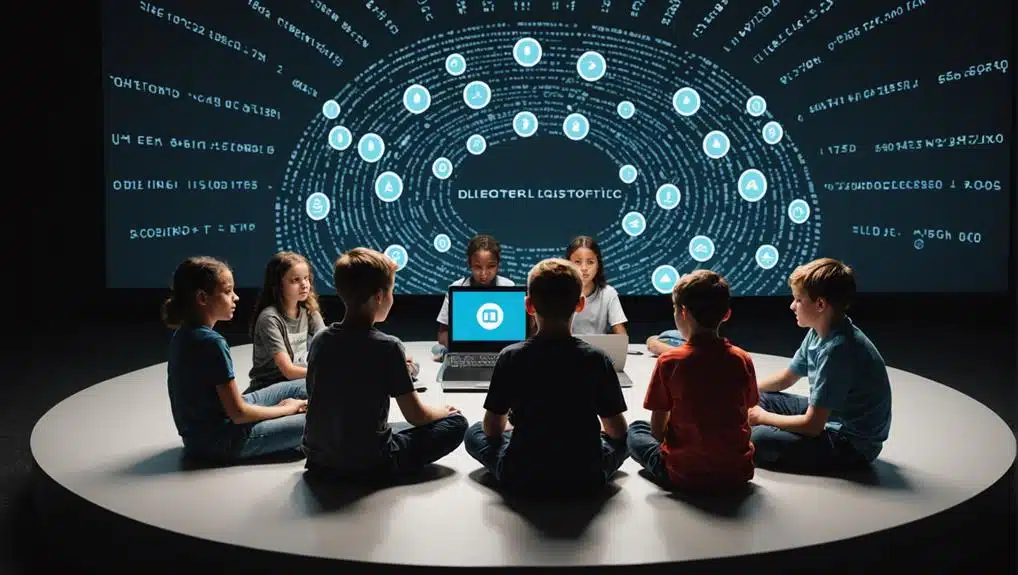
Coding offers a distinct platform for children to nurture different communication skills. Through collaborative problem-solving, children can improve their verbal and nonverbal communication abilities, while drafting proposals and working within a team can significantly enhance their written communication. Moreover, the visual aspect of coding helps children to convey information effectively, thereby contributing to their overall communication development.
Collaborative Problem-Solving Benefits
Exploring the realm of coding, one quickly uncovers its potential to be a powerful tool for improving communication skills in children. Through collaborative problem-solving, children develop essential verbal communication skills and learn the significance of teamwork.
- Coding activities nurture oral communication as children are required to articulate their ideas and strategies clearly. They learn to convey their thoughts in a way that is understandable to their peers, paving the way for effective dialogue.
- These activities promote collaboration. To achieve a common goal, children must work in harmony, understanding and respecting each other’s perspectives. This cooperative spirit fosters a sense of belonging and unity among them.
- Coding also helps children develop their nonverbal communication skills. Although we will explore this further in the next section, it’s worth mentioning that explaining coding concepts often involves gestures and facial expressions.
- Lastly, by actively sharing thoughts and engaging in discussions, children learn to present their work, provide constructive feedback, and participate in meaningful conversations.
In essence, coding is not just a technical skill; it’s a means to improve communication, promote teamwork, and cultivate a sense of belonging in children.
Advancing Nonverbal Communication
Building on the concept of collaborative problem-solving, it becomes increasingly evident that nonverbal cues play a crucial role in the domain of coding. Through the act of coding, children hone the skill of nonverbal communication, conveying ideas without words and improving their ability to communicate complex thoughts concisely.
Effective nonverbal communication transcends verbal interactions, fostering more profound understanding and connection. In the coding context, it is crucial to facilitate team communication, especially when explaining intricate code structures. It also transitions into visual communication, an essential component of coding that helps create user-friendly experiences.
Visual communication, indicating the use of symbols, images, and expressions, is vital in coding. It assists children in visualizing the code’s function and structure, thereby strengthening their understanding. Furthermore, it enhances their nonverbal communication skills by enabling them to express their ideas visually.
In essence, coding catalyzes children’s nonverbal communication development, improving their ability to express ideas beyond words, enhancing their visual communication skills, and bolstering effective team communication. These skills not only enrich their coding experience but also equip them with tools crucial for their overall communication development.
Written Communication in Coding
Within the domain of coding, written communication emerges as a crucial skill instrumental in the child’s holistic development. In this complex environment, written communication serves as an essential conduit for children to express their thoughts, understand team communication, and draft efficient proposals.
- Developing Clear Thoughts: Coding activities promote precision and clarity of thought. Children learn to articulate their ideas clearly by encoding and decoding commands.
- Enhancing Team Communication: In the collaborative sphere of coding, children learn to communicate effectively within their teams, ensuring smooth task execution.
- Drafting Proposals: Writing proposals in coding activities requires children to be persuasive and coherent, thereby honing their written communication skills.
- Feedback Culture: Coding encourages a feedback culture. Children learn to give and accept feedback, promoting empathy and understanding.
In essence, coding activities serve as a vehicle for improving written communication. Through this analytical, empathetic, and knowledgeable approach, children not only learn coding but also become effective communicators, fostering a sense of belonging and cooperation. This skill set will be invaluable as they navigate their individual and professional lives in the future.
Frequently Asked Questions
What Are the Four Types of Communication With Children?
The four types of communication with children encompass verbal, nonverbal, visual, and written communication. This includes spoken and written language, body language, facial expressions, and the use of images, charts, and graphics.
What Are the 4 Main Types of Communication?
The four main types of communication are verbal, nonverbal, written, and visual. Each plays a significant role in conveying information, developing relationships, and facilitating understanding in diverse individual, educational, and professional situations.
What Are the Communication Styles in Childhood?
Childhood communication styles include sociable, reluctant, passive, and own agenda. Understanding these helps foster effective communication, identifies potential speech/language needs, and promotes improved interaction with the child for a sense of healthy development and belonging.
What Are 5 Child-Friendly Communication Techniques?
Child-friendly communication techniques involve using age-appropriate language, encouraging self-expression, actively listening, incorporating communication exercises in daily activities, and fostering an environment where children feel heard and understood.
Conclusion
To sum up, children’s communication styles vary considerably, just like their unique characteristics. Understanding these styles and applying techniques can significantly enhance a child’s communication abilities. Educators play a crucial role in this improvement, creating a setting that promotes successful communication. Notably, coding, a contemporary approach to the timeless act of conversation, can also play a part in developing these skills. Therefore, grasping and backing communication diversity is a crucial step toward nurturing solid relationships and practical communication skills.

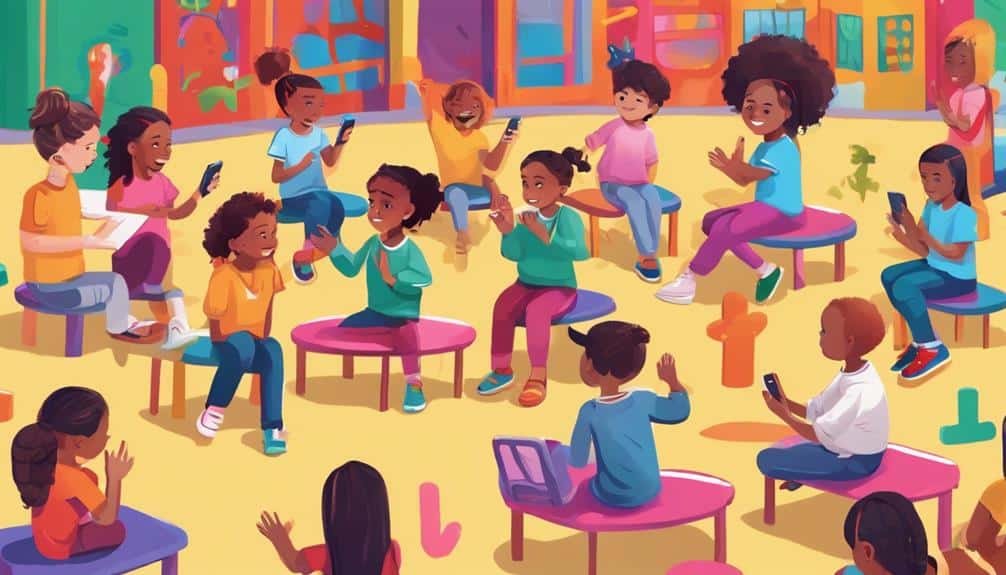
Recent Comments